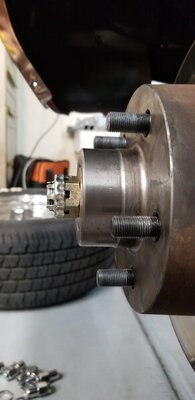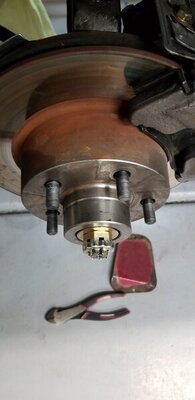Ask yourself this question;
If you set the endplay perfectly today,I mean bang-on perfect; how long can you expect it to stay perfect, and how can you know...... because it could be twenty years from now, before you check it again, and I can guarantee two things; 1) it will not be perfect any more, and 2) neither you nor the bearing will ever have known the difference.
Use it if you want, throw it away if the want, it makes no difference.
How can I say that with such confidence?
Cuz I run my KH rotors loose enough to knock the pads back, and tighten them up a smidge' oh, about every 5 years, or so,lol.
They're tapered bearings, they don't care You'll do more damage if too tight, than if really loose.
The reason the spec is .003 to .007 is twofold; If you set them to .003, chances are new ones will be closer to .007 in a couple of thousand miles. So if you take it back to your mechanic, cuz you think they're loose; guess what... if they're still less than .007, then he has every right to bill you for the adjustment. And secondly, the bearings actually like to be loose., and third; the spec gives you a big fat window to hit during the adjustment.
If I told you were I have been running mine, since the 70s, you'd probably feint.
While I'm not particularly fond of wvmarv's delivery, I have to agree with him. They're wheel bearings, not rod bearings.




















